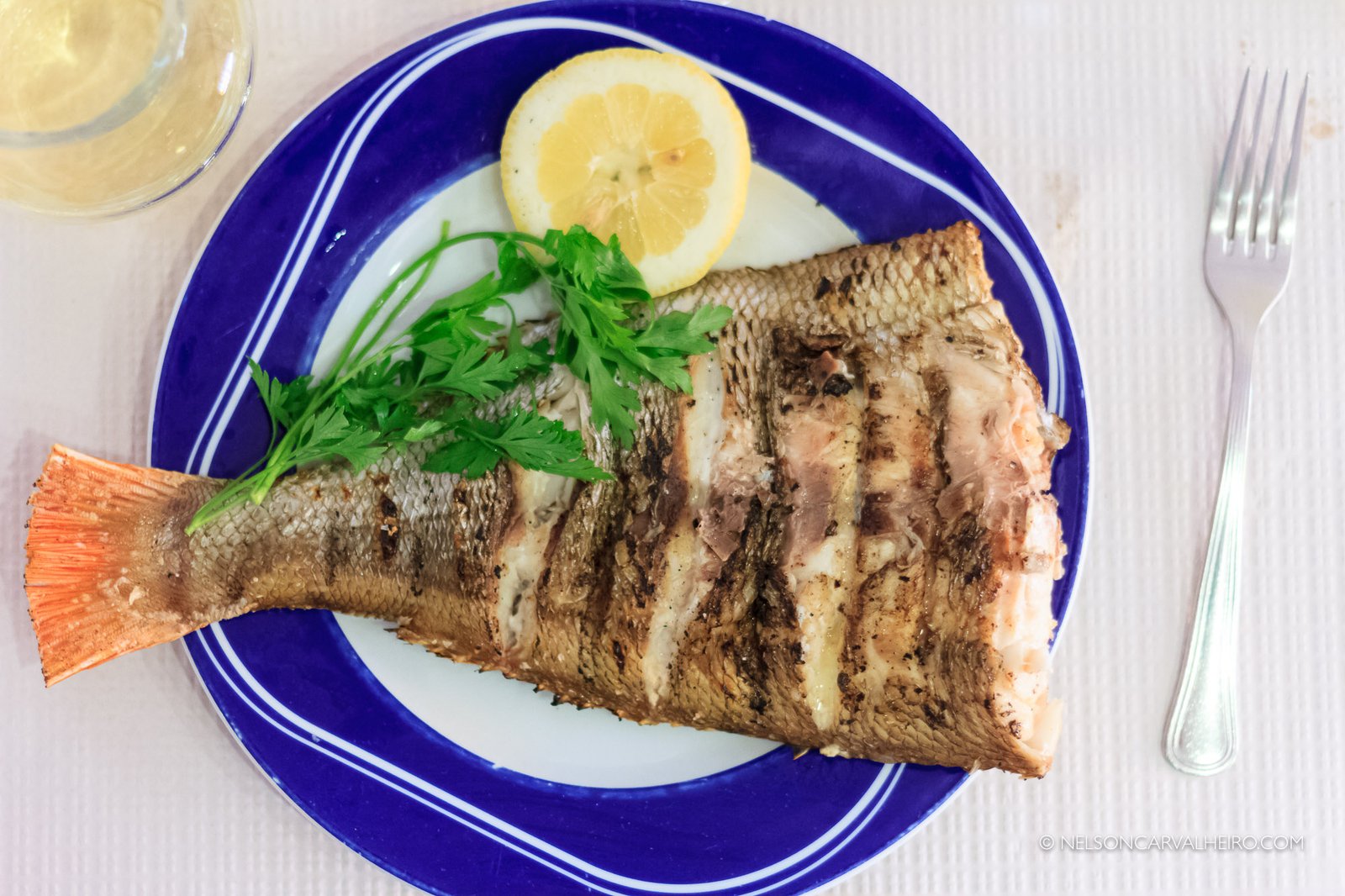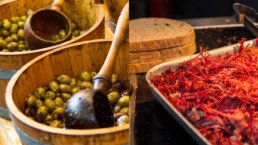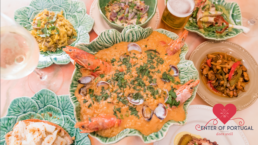The Portuguese art of grilling fish on charcoal
The Portuguese art of grilling fish on charcoal is embedded in Portuguese culture and I want everyone to know and why Grilled Portuguese Fish is the best in the world.
Well-hidden at the end of the Atlantic, with only the sea before it, Pedrogão Beach is for many, just another almost unknown locality of the West Portuguese Atlantic coast. Nearby, São Pedro de Moel attracts the majority of the local tourists influenced from the times when the Portuguese royalty used to have one of their holiday homes here. Pedrogão, therefore, maintained its fishing village identity, where the Xávega art is also the only source of income of local fishermen. This relative isolation requires that the local restaurants to buy freshly caught fish directly on the beach and so the village is considered by locals as one of the best places to enjoy fresh fish. 
Rotunda is one of the restaurants that do justice to the quality of the local fish. The owner, Victor, has as much of a bad temper as he has demand f for quality fish. With a serious look, he presents us with a sea bream in shades of red, silver, and copper. Overflowing the plate, the skin is crispy, smells, and tastes of the sea. When freshly caught, their flesh is white, moist, and naturally separates into flakes with a fork. This fish doesn’t need much seasoning. Just salt. maybe a little lemon and parsley, beyond the charcoal grill. Some also add olive oil and vinegar, but in my opinion, one is already adulterating the purity of the taste.

The big difference in flavor and texture of fresh fish is the way it was captured i.e. if the fish was line-caught or by trawler nets. This difference materializes on the physical stress which the fish goes through during its capture which affects its muscles (meat), inevitably altering its quality. Line-caught is always better because its fight against the fisherman is momentary and short-lived, making its meat relaxed from the moment it is taken out of the sea. The fish caught by a trawler, fights for several minutes (sometimes hours) for its life together with thousands. With the space to swim increasingly reduced, the fish bodies undergo physical damage of constant clashes in the nets, completely macerating its skin and flesh.
This Portuguese art of grilling fish on charcoal post is taken from my Portuguese Travel Cookbook, where you can find over 50 Traditional Portuguese Recipes and learn how the Portuguese say “I love you” through food.
How to grill fish on charcoal?
In addition to the fresh sea fish, it is also important to use only genuine coal from 100 percent plant origins and with a high grain size. Never resort to petroleum-based fire starters as petroleum products produce chemical waste, which remains in the coal and contaminates the food. “Depressa e bem não há quem” is Portuguese for – no one can do something quickly and well at the same time, a popular saying which fits very well to the to the art of grilling fish on charcoal.
Preparing the fish in a hurry is a mistake because we always need to have glowing embers, with no evidence of smoke. A good measurement method is to place the hand about 15 centimeters above the level of embers. If the hand burns instantly, the coals are very hot and we must wait for the heat to cool down. The ideal temperature is reached when it takes two or three seconds to feel the intensity of heat on the hand.
 For sea bass, snapper, red sea bream or dory, this is the sweet spot. The fish should be placed 15 cm from the heat source and stay 15 minutes per side for every four centimeters of thickness. The fish should only be turned once, in order to guarantee consistency and avoid breaking the integrity of the skin. If you scale it, cooking times reduce to half. You should always start at the inner side (the spine) and leave the skin side for later. It is important to not let the meat dry, as this should be consumed still wet. If the loins are very thick, then choose to score them, for this allows the heat to reach the inside of the fish. In the case of sardines, sea trout, tuna, and other oily fish, these should be placed as close as possible to the coals, so that the fat of the fish as it heats, doesn’t drop into the tray and ignite the hot coals.
For sea bass, snapper, red sea bream or dory, this is the sweet spot. The fish should be placed 15 cm from the heat source and stay 15 minutes per side for every four centimeters of thickness. The fish should only be turned once, in order to guarantee consistency and avoid breaking the integrity of the skin. If you scale it, cooking times reduce to half. You should always start at the inner side (the spine) and leave the skin side for later. It is important to not let the meat dry, as this should be consumed still wet. If the loins are very thick, then choose to score them, for this allows the heat to reach the inside of the fish. In the case of sardines, sea trout, tuna, and other oily fish, these should be placed as close as possible to the coals, so that the fat of the fish as it heats, doesn’t drop into the tray and ignite the hot coals.
Remember to only use rough sea salt. Only this has the consistency and robustness sufficient to preserve the fish’s skin and penetrate firmly enough without adding too much salt flavor.

Disclaimer :
All content of this posts, including the recipe, text, and photos are subject to copyright and belong to the Portuguese Travel Cookbook and its authors Nelson Carvalheiro and Emanuele Siracusa.
2 Comments
Add comment Cancel reply
This site uses Akismet to reduce spam. Learn how your comment data is processed.







[…] Portuguese aside from cooking over charcoal, which is a common way to grill fish in Portugal (see Nelson Carvalheiro’s article for a beautiful foodie’s take on […]
“Another winner from HotYums! I’m amazed at how you combine bold spices with simple techniques to create such mouthwatering meals. This is exactly the kind of recipe that turns an ordinary dinner into something unforgettable.”
Comment 1:
“HotYums always lives up to its name—every recipe feels like a burst of flavor and creativity! The step-by-step photos make it so easy to follow, and I love how each dish has a little story behind it. Definitely bookmarking this one for my next weekend feast!”
hotyums.com/grilled-fish/